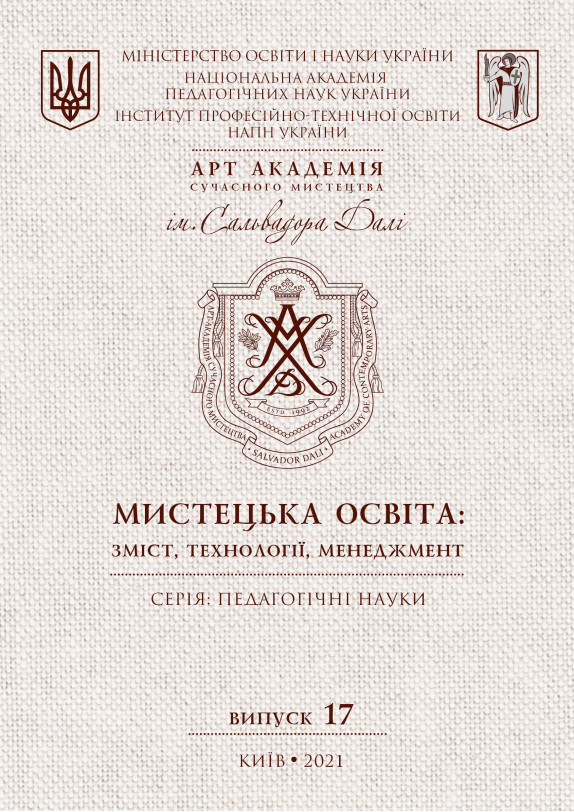ОСОБЛИВОСТІ ВИКОРИСТАННЯ КОМІКСІВ НА УРОКАХ УКРАЇНСЬКОЇ ЛІТЕРАТУРИ
Анотація
У статті визначено особливості використання коміксів на уроках української літератури в закладах загальної середньої освіти. Актуальність теми дослідження автор статті обґрунтовує вимогами державних документів, що визначають напрями реформування освітньої галузі й необхідністю адаптації навчального матеріалу до особливостей «кліпового» мислення сучасних учнів.
Автор розглядає комікс як зразок креолізованого тексту, у якому поєднано вербальний і невербальний компоненти на різних рівнях – змістовому, змістово-композиційному та змістово-мовному. Лілік О. О. визначає переваги коміксів як засобу навчання, пропонує критерії відбору коміксів для використання в навчально-виховному процесі, характеризує сучасний стан видання коміксів в Україні, наводить перелік коміксів (як за творами класичної української літератури, так і самостійних творів), які варто використовувати в навчально-виховному процесі. Автор статті обґрунтовує доцільність застосування коміксів у межах шкільного курсу української літератури на етапах перевірки домашнього завдання, пояснення нового матеріалу, формування практичних умінь і навичок, підбиття підсумків, а також у контексті уроків позакласного навчання для формування ціннісно-світоглядних орієнтацій та інформаційної культури учнів. Лілік О. О. рекомендує використовувати комікси під час як індивідуальної, так і групової роботи, а також у процесі виконання навчальних проєктів. Автор доводить, що застосування коміксів у навчально-виховному процесі сприятиме розвитку усного й писемного мовлення учнів, підвищенню рівня їхнього самоусвідомлення, самоконтролю й здатності до самоаналізу й рефлексії, а також інтенсифікує розвиток креативності учнів засобами української літератури.
Вона пропонує приклади навчальних завдань із використанням коміксів на матеріалі соціально-побутової повісті І. С. Нечуя-Левицького «Кайдашева сім’я» (10 клас), зокрема в контексті аналізу сюжету й композиції твору, характеристики персонажів повісті тощо, а також рекомендації щодо проведення уроку позакласного читання за сучасними українськими коміксами.
Посилання
Видано комікси про кіборгів та донецький аеропорт. URL: https://ua.112.ua/kultura/vydanokomiksy-pro-kyborhiv-ta-donetskyi-aeroport-452265.html. (дата звернення: 15 жовтня 2021 року).
Ісаєва О. Креолізований текст на уроках світової літератури як фактор активізації читацької діяльності. URL: media.ippo.kubg.edu.ua/wp.../isaeva_ kreolizovanyj_tekst.doc. (дата звернення: 02.09.2021).
Історія українських коміксів. URL: https://uncomics.com/ukranian-comics. (дата звернення: 10 жовтня 2021 року).
Колесник О. С. Поетика графічного роману: синтез мистецтв та транспозиції. Актуальні проблеми історії, теорії та практики художньої культури: зб. наук. пр. 2013. Випуск ХХХІ. С. 301-307.
Лілік О. О. Особливості використання креолізованих текстів у професійній підготовці майбутніх учителів української літератури. Мистецька освіта: зміст, технології, менеджмент. 2018. Випуск 13. С. 71-84.
Сонин А. Г. Комикс как знаковая система: психологическое исследование (на материалах франкоязычных комиксов): дис…. канд. фил. наук: 10.02.19. Барнаул, 1999. 236 с.
Ушневич С. Використання медіатехнологій у підвищенні літературної освіти молодших школярів. URL: file:///C:/Users/Admin/Downloads/8586-Текст%20роботи-16148-1-10-20210210.pdf (дата звернення: 13 жовтня 2021 року).
Чикалова Т. Г. Дидактичні можливості використання коміксів на уроках у початковій школі. Інноваційна педагогіка. 2020. Випуск 20. Т. 3. С. 52-55.
Авторське право (c) 2021 Ольга Лілік

Ця робота ліцензується відповідно до Creative Commons Attribution-NonCommercial 4.0 International License.

